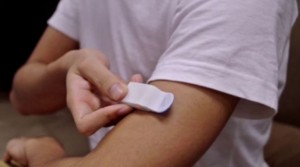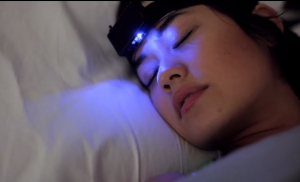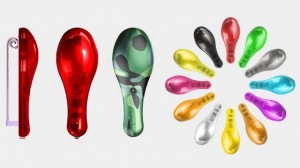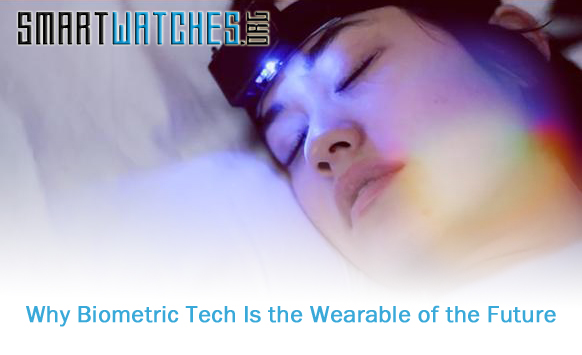Have you ever heard the term biometric tech? Do you know what it is?
Believe it or not, the concept relates to the wearables we use today.
With modern wearables, you can track stats like heart rate, the calories you’ve burned, and steps you’ve taken. This can all be achieved with a small device worn on the wrist, waistband or even the neck.
The devices that measure these stats are a form of biometric tech. Would you believe us if we told you that most of the devices on store shelves aren’t sophisticated at all?
What if we told you that in a few years we’ll have biometric tech that is more capable than anything you can buy right now?
It’s true, and to prove it we’re going to take a look at some of the things have been accomplished with biometrics.
What is Biometrics?
Biometrics refers to measurements related to the human body and biology. There are many forms of biometrics.
One form uses the tech as a form of authentication. It involves using human characteristics to gain access to something. In layman’s terms, an eye or thumbprint scanner can be used as a form of biometric authentication.
So, biometric technology refers to any device that can measure elements of the human body.
For instance, a fitness tracker is a form of biometric tech because it can record human elements. Elements like calories burned, steps taken and heart rate.
How Can They Be More Advanced?
Some of the fitness trackers on the market seem pretty innovative, right? Compared to advanced biometric tech, fitness trackers are simple.
The best way to look at them is a doorway of sorts. They will pave the way for more advanced technology.
![]() How could they become more advanced, you ask? The field will soon include devices that can measure data like brain activity, glucose levels, posture and more.
How could they become more advanced, you ask? The field will soon include devices that can measure data like brain activity, glucose levels, posture and more.
With the right sensors, manufacturers could create a device to measure just about anything in the human body. Any stat, health update or change – physical or chemical – can be tracked.
Perhaps, the most promising idea is that such devices could eventually allow us to have a small glimpse at the future.
Imagine a device that can measure your posture and tell you what problems you might encounter later in life. We could use a device like that to ensure we remain healthy. No more slumping when you sit, or bending over the wrong way.
Technically speaking, a device like that could alter the future by telling you to sit up straight.
Soon, biometric tech will help us prolong our lives and be more healthy.
Devices that do such a thing are already in development as we speak.
Glucose Detection
Yes, there are devices that can track the calories you burn during a workout or how many steps you take in a day, but the figures are estimated.
What if you could get more accurate readings?
 For instance, tapping into your bloodstream to measure glucose levels is a more precise way to measure your health. This would allow you to watch proteins, fats, cholesterol, and glucose levels.
For instance, tapping into your bloodstream to measure glucose levels is a more precise way to measure your health. This would allow you to watch proteins, fats, cholesterol, and glucose levels.
Diabetics, athletes and those with severe ailments would benefit from a device that measures glucose levels in blood. Believe it or not, sensors already exist that can do such a thing.
The GlucosAlarm is a device that can measure glucose levels through urine. Diabetics can place it inside the toilet and get an accurate reading of glucose levels throughout their day. Unfortunately, the company behind the device was unable to meet their crowdfunding goals.
Scripps Health created a small capsule that can be injected into the bloodstream. It roots in a capillary bed and measures glucose levels in real-time, syncing the info with a smartphone app. The best part is that it powers itself via hydroelectricity as blood flows by.
EEG Detection or Electroencephalogram
Electroencephalogram or EEG readings can be used to see brain activity. The tool to measure this data usually looks like a cap or headset.
EEG devices measure the electrical impulses happening in your head brain. You usually put them on when you’re sleeping, thinking or meditating. These activities provide the most insight into your brain patterns.
 It’s silly to think someday we might be walking around with EEG headsets all day. But, the technology can be remarkably useful.
It’s silly to think someday we might be walking around with EEG headsets all day. But, the technology can be remarkably useful.
Kokoon is a pair of EEG headphones that measure brain activity and play music to induce sleep and improve the quality.
EEG technology can also provide more efficient information.
Imagine a headset that can scan your thoughts while you browse Netflix and then select entertainment based on your mood.
Or, what about a VR gaming headset designed to measure EEG readings and change the environment based on your emotions?
Let’s get ridiculous for a moment. What if you were wearing an EEG headset that could measure your hunger and send a wireless signal to a smart oven to start boiling water for dinner?
This could all be possible someday thanks to EEG devices, which are nothing more than a form of biometric tech.
Olfactory Sensing Tech
Imagine a device that clips onto your shirt and sends wireless alerts to your phone letting you know that you smell musty and need to apply deodorant. It would require a unique form of biometric tech.
We can use the same technology to measure other odors in the environment. Like the smell of a delicious, warm meal cooking in the distance.
 You must have experienced this at some point. You’re out in public and you smell the delicious aroma of food cooking nearby. Your mouth immediately starts to water and you try to figure out what restaurant it’s from.
You must have experienced this at some point. You’re out in public and you smell the delicious aroma of food cooking nearby. Your mouth immediately starts to water and you try to figure out what restaurant it’s from.
Now, what if you had a device that could identify that information for you — like what Shazam does with music?
Sounds awesome, right? Would you believe us if we said it’s possible?
Jenny Tillotson from Central Saint Martins is working on a device called the eScent, which can mask odors by creating a personal spray zone.
When you’d otherwise be smelling something gross the eScent masks the odor with perfume or an equally enjoyable scent.
Other Forms of Biometric Tech
There are other forms of biometrics too like devices that measure EMG or electromyography (skeletal structure), ECG or electrocaridogram (cardiac rhythm), facial recognition, auditory biometrics and more.
So, while you might see fitness trackers, UV exposure bracelets and smartwatches flooding the market in just a few years time you’ll see much more useful tech available at least when it comes to personal health and monitoring.

